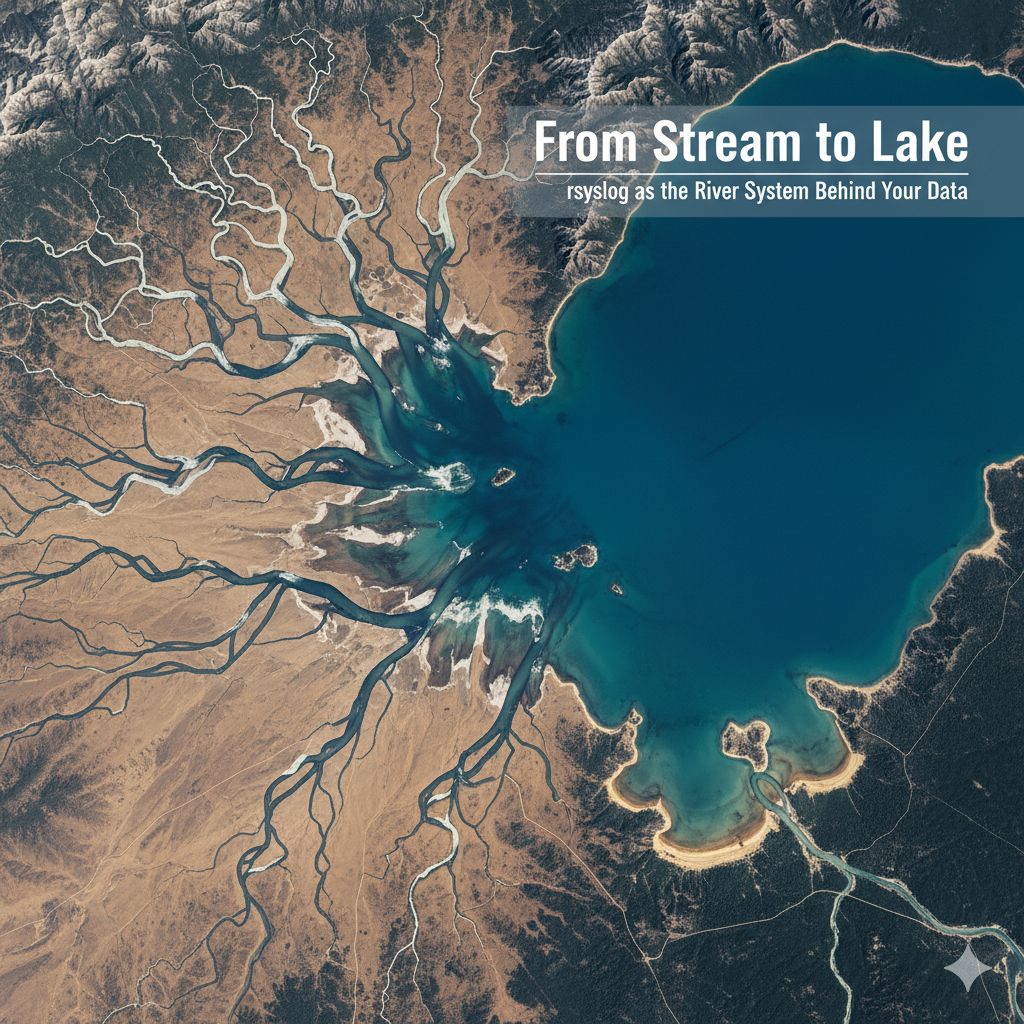I recently had a discussion about data lakes. It made me realize that people often picture them as the starting point of data collection — as if all information somehow appears in the lake. In reality, no lake exists without rivers. And in the world of IT systems, rsyslog is part of that river system.

The flow that starts small
Every system produces small streams of information: a log file here, a journald entry there, a network event that flashes by.
Each is a small stream, sometimes only a few messages per minute — easy to ignore, but together they define the pulse of your infrastructure.
rsyslog sits right where those streams begin. It collects them, gives them structure, and keeps them moving even when downstream systems are busy or unreachable. That’s the “small stream” part — quiet, persistent, dependable.
Growing into powerful rivers
As logs and events merge, the flow grows. One rsyslog instance feeds another, or a central relay aggregates hundreds of sources. At this point, the data flow becomes a river — stronger, more organized, but also more dangerous if left unmanaged.
This is where rsyslog’s internal queues, rate limits, and guaranteed delivery matter. They are the flood control and reservoirs that prevent overloads and data loss. The ruleset logic defines where the flow splits: which messages go to security monitoring, which to application analytics, which to long-term retention.
Hydropower for your data
Along the way, rsyslog can transform the data — parsing, normalizing, or enriching it. Think of that as hydropower: the same flow that keeps moving also generates value. A few structured fields or normalized timestamps can save massive effort downstream.
In modern pipelines this transformation step is critical. Systems like ClickHouse, Loki, or data lake query engines expect clean structure and predictable schemas. rsyslog provides exactly that — at the right time, before the data hits heavy storage.
The lake at the end of the flow
The river system eventually ends in the data lake — S3, MinIO, or whatever object storage backs your analytics layer.
But rsyslog’s role doesn’t end there. It can feed the lake directly via HTTP or Kafka, or indirectly through search systems like OpenSearch or Loki that later export to cold storage.
That design keeps your lake cheap and your search fast. The lake handles long-term history; rsyslog ensures the inflow is structured, filtered, and complete.
Why this view matters
When people discuss observability stacks, they often jump straight to dashboards, queries, or machine learning. Those are the visible parts — the surface of the lake.
But under that surface, the quality of your observability depends on a stable river system that never stops flowing and never loses data.
That’s where rsyslog quietly does the work. It connects the smallest local stream with the largest organizational data flow, bridging legacy systems and modern analytics backends. It’s not the lake itself — it’s what keeps the lake alive.
What’s next
This reflection also reminded me that we need to improve our documentation around these data-flow patterns — especially how rsyslog fits into modern lake and analytics setups. The goal is to make this connection clearer and easier to apply in practice. That’s now on our roadmap.
